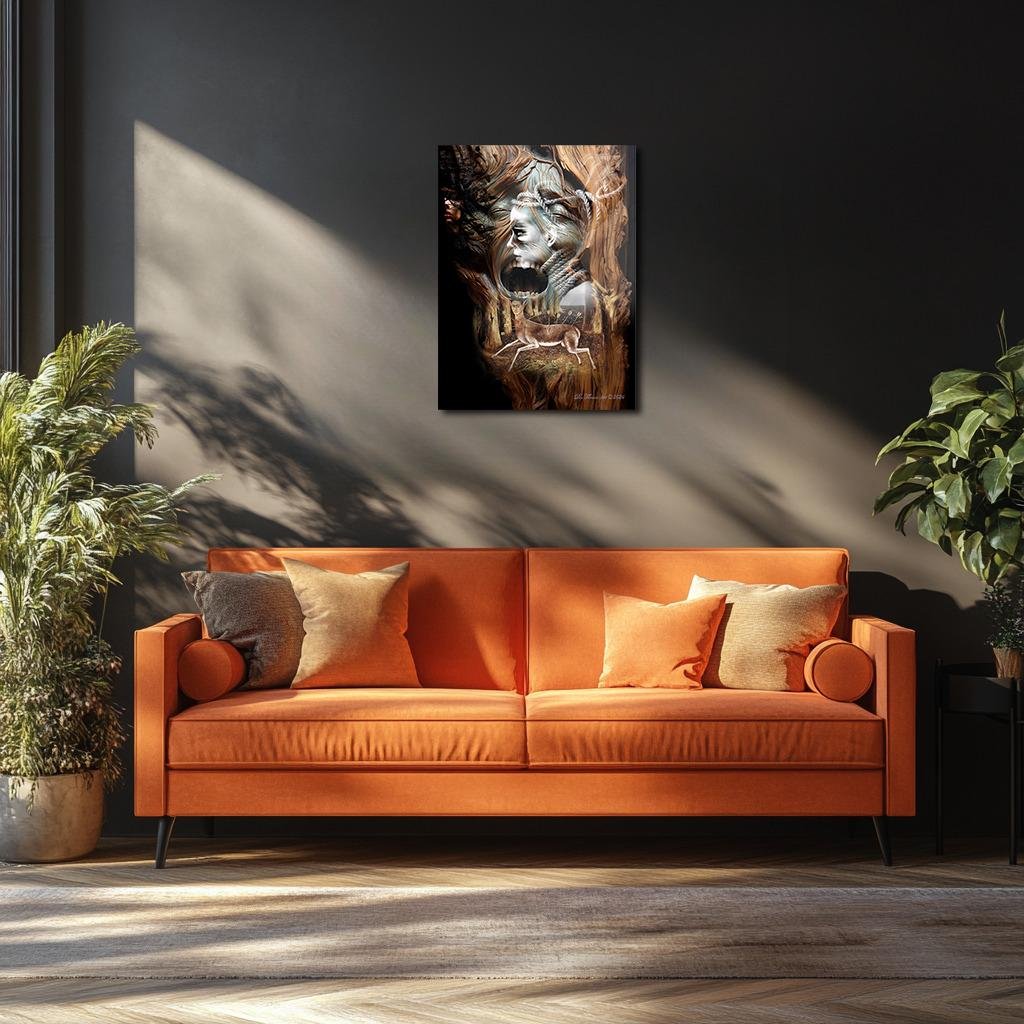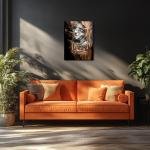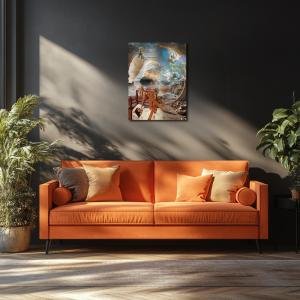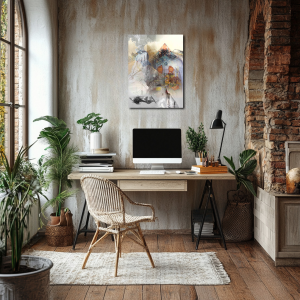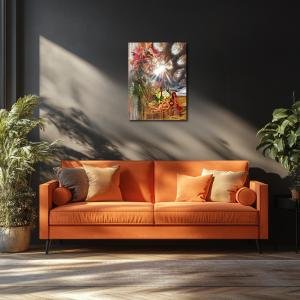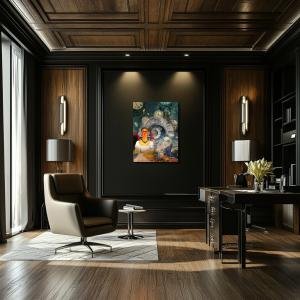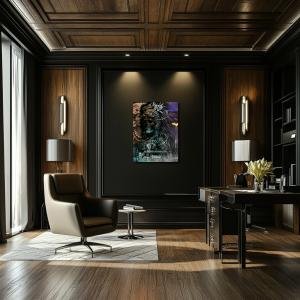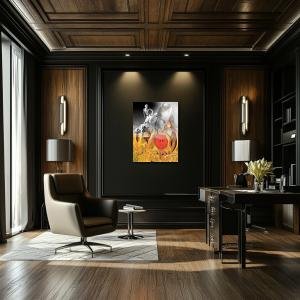The Bark and the Arrow: Frida’s Cry Through the Forest
The Bark and the Arrow reimagines Frida Kahlo’s The Wounded Deer as a haunting union of body and forest, where suffering grows through bark and silence opens into scream. With earth-toned browns, rusted reds, ash grays, and spectral whites, this piece entwines Frida’s wounded deer with a screaming spirit carved into twisted trees. Arrows become branches, pain becomes woodgrain, and Kahlo’s gaze becomes the anchor in a world of silent grief. This is not a death scene—it is survival through roots, a shrine to the cry that refuses to vanish.
Please see Below for Details…
Hotline Order:
Mon - Fri: 07AM - 06PM
404-872-4663
This conceptual reimagining of Frida Kahlo’s The Wounded Deer reshapes her iconic self-portrait as a wounded animal into a layered lamentation of pain, isolation, and the raw defiance of vulnerability. Titled The Bark and the Arrow , this piece weaves Kahlo’s fragmented body with the textures of ancient wood and wild screams, dissolving boundaries between agony and identity, creature and tree, silence and roar. The deer, still pierced, still proud, now stands within a forest that has grown into her skin—a sanctuary and a trap, both grown from trauma and rooted in survival.
At the heart of the composition lies Kahlo’s deer-body, emerging from the lower portion of the image like a memory stitched into bark. The forest around her has thickened, transforming from a passive background into a living entity. The trunks are no longer just scenery—they are veins, bones, sinews of rage and resilience. From within the largest, central tree, a woman’s face pushes through the grain: her mouth stretched in a silent scream, her features carved with streaks of silver and shadow. Her head is crowned in twisted rope, her neck arched like a deer’s about to break. This is not Frida alone—this is pain itself speaking through the bark.
The arrows embedded in the deer’s flank remain, but they pulse with a new rhythm. Each arrow is now mirrored by a streak of splintering wood—suggesting that the forest too has bled, has been wounded in tandem. The deer’s stance, mid-step, is frozen, as if time itself has stopped to bear witness. Her face, with Frida’s unmistakable gaze, looks not in despair, but in confrontation. Her wound is not her end—it is her name.
A secondary figure emerges faintly from the left—partially veiled in dark roots and woven hair. This form does not scream—it watches. It is the half-hidden self, the one that knows, the one that sees the wound without turning away. Between the trees, glimpses of light appear like faint doorways—perhaps exits, perhaps memories, perhaps illusions.
The color palette of The Bark and the Arrow is rich in somber density. The dominant tones are earthy: sepia, walnut, rust, and blackened ochre dominate the bark and forest. These are the colors of aged wood, dried blood, and time’s erosion. The texture of bark flows into hair, into flesh, into horn and fiber—there is no line where the deer ends and the forest begins. This palette evokes a world not of death, but of bearing—of being asked to carry more than one body should.
Frida’s deer-body is rendered in warm brown, with pale patches of ivory at the chest and haunches, suggesting fragility beneath fur. The arrows glow in rusted iron, their shafts highlighted in crimson tones that mirror the rawness of exposed emotion. These wounds do not bleed theatrically—they whisper, they pulse, they remain. The redness is not vivid but persistent—a muted warning that never heals.
The face within the bark glows faintly with ash gray, moonlit white, and bone beige. These spectral tones give it a ghostlike presence, hovering between sculpture and soul. The mouth, wide in agony, is rimmed in smoky charcoal—a dark echo of suppressed violence. Above it, the rope twists in soft silver and stone—a symbol of being bound, but also woven into something larger.
The background sky fades into soft desaturation: slate gray to dull beige, evoking the dimness of a fading sun or the aftermath of stormlight. There is no blue, no hope of open sky—only the slow compression of air between trees. Yet within that tension, there is clarity, there is breath, and there is defiance.
When I created The Bark and the Arrow , I wanted to honor Kahlo’s The Wounded Deer not just as a personal testament of physical suffering, but as a portrait of the psychic forest we all walk through when pain becomes identity. Kahlo’s work was never about victimhood—it was about what it means to live inside the wound, to find beauty and strength in the very place that breaks us.
This reimagining invites the viewer not to look at pain from afar, but to enter it—to feel the texture of the bark, the strain of the scream, the haunting stillness of the deer who keeps walking. The forest becomes the body. The scream becomes the wind. The deer becomes the prayer.
The composition follows a vertical descent: from the screaming face at the top, downward through the twisted tree, into the stillness of the deer, and finally into the roots. This path mirrors the fall from conscious pain into embodied endurance. It is not a descent into death—but a descent into deep knowing.
In this vision, Frida Kahlo is not merely the hunted—she is the forest, the scream, the arrow, the silence after. She tells us not to run from pain, but to stand in it. To root ourselves through it. To find, in the wound, our most unshakable form.
Add your review
Your email address will not be published. Required fields are marked *
Please login to write review!
Looks like there are no reviews yet.

